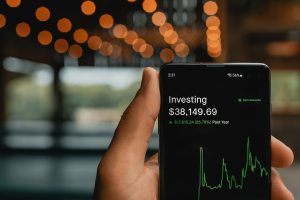Leverage is one of the most important aspects of forex trading. It is a tool that allows traders to increase their buying power and potentially increase their profits. However, it is important to understand the risks and benefits of leverage before deciding which leverage is best for forex trading.
Leverage is essentially borrowing money from a broker to increase the size of your trade. For example, if a trader has a $10,000 account and uses 100:1 leverage, they can control a $1,000,000 position. This means that every pip (the smallest unit of measurement in forex) movement would be worth $100.
The most common leverage ratios in forex trading are 50:1, 100:1, and 200:1. Some brokers offer even higher levels of leverage, such as 500:1 or 1000:1, but these levels of leverage are generally not recommended due to the increased risk involved.
So which leverage is best for forex trading? The answer depends on several factors, including the trader’s risk tolerance, trading style, and experience level.
For beginners, it is generally recommended to start with lower levels of leverage, such as 50:1 or 100:1. This is because higher levels of leverage increase the risk of losing more money than the trader has in their account. For example, if a trader has a $10,000 account and uses 500:1 leverage, they can control a $5,000,000 position. If the trade goes against them and they lose 1%, they would lose $50,000, which is five times more than their account balance.
Furthermore, beginners may not have the experience or knowledge to handle the increased risk that comes with higher levels of leverage. It is important to understand the risks and benefits of leverage and to have a solid trading plan in place before using higher levels of leverage.
For experienced traders who have a solid trading plan and risk management strategy in place, higher levels of leverage may be appropriate. This is because higher levels of leverage can potentially increase profits, as every pip movement is worth more money. However, it is important to use leverage wisely and not to over-leverage positions.
In general, it is important to remember that leverage is a double-edged sword. It can increase profits, but it can also increase losses. Traders should always have a solid trading plan and risk management strategy in place, regardless of the level of leverage used.
Another factor to consider when deciding which leverage is best for forex trading is the currency pair being traded. Some currency pairs are more volatile than others, which means they have larger price movements. For example, the GBP/JPY pair is known for its large price movements and higher volatility than the EUR/USD pair.
Traders who trade more volatile currency pairs may want to use lower levels of leverage to manage the increased risk. On the other hand, traders who trade less volatile currency pairs may be able to use higher levels of leverage to potentially increase profits.
In conclusion, the best leverage for forex trading depends on several factors, including the trader’s risk tolerance, trading style, experience level, and the currency pair being traded. Beginners should start with lower levels of leverage and have a solid trading plan and risk management strategy in place before using higher levels of leverage. Experienced traders may be able to use higher levels of leverage, but should always use it wisely and not over-leverage positions.





